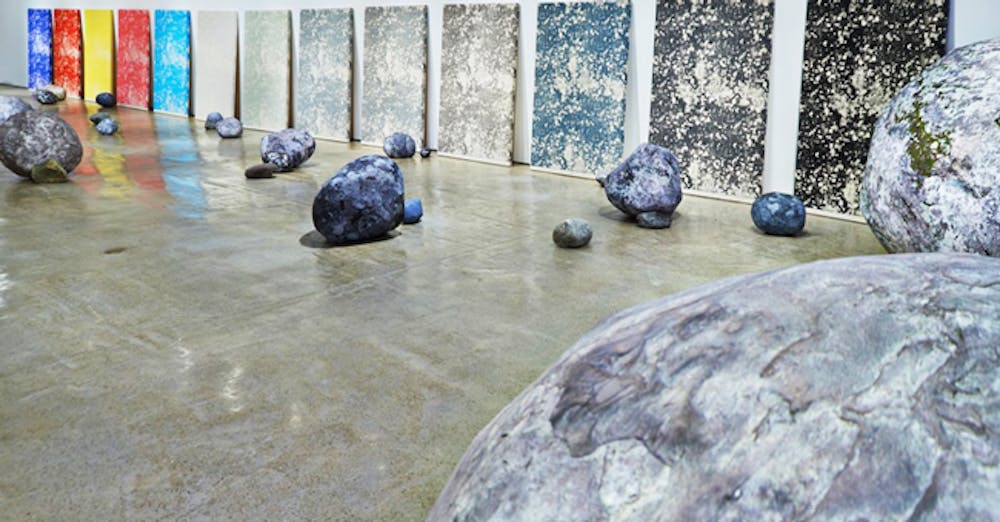Following the success of the “Triple Point” exhibition at the Venice Biennale, Sarah Sze is exhibiting three site-specific installations at The Fabric Workshop and Museum. The intricate and immense works explore landscapes – natural, man-made, and imagined. While each installation is distinct, there are threads of familiarity woven between them.
On the 1st floor of the museum, Sze has dramatically lit a museum desk. The scene is familiar, with a coffee cup sitting next to a messy stack of typed pages. In fact, the desk could have been taken directly from countless Penn dorm rooms. In the next room we see a deconstruction and re-imagination of the previous scene. The desk is replaced with a wire grid-like structure of the same dimensions. The structure is filled, and surrounded by ceramic shards, pantone swatches, potted plants, threads, and cut-out pages of the New York Times. Sze is producing a final piece, while simultaneously revealing the creative process underpinning it. When I asked about the electric heater at the far-side of the work, my guide told me it was there during the setting up stage and Sze decided to incorporate and envelope it into the work.
The 2nd floor space is filled with an assortment of rocks and boulders. Some are real and some are screen-printed paper shells. I had to fight the urge to see which ones I could lift and which I couldn’t. Along the far wall rest a series of canvases printed with the same faux mineral pattern. The canvases are printed in cyan, magenta, yellow and a spectrum of grays to black. The room feels other-worldly and peaceful, reminiscent of a zen garden.
Finally, on the 8th floor of the building is Sze’s third installation. The space is dimly lit and eerie. On the floor are pristine pages of The New York Times, laid out in a grid pattern. The pages are dated and recent, referring to each day of the piece’s making. On each page, the photographs have been replaced with images of sea, sand, or snow, as well as piles of materials, such as sand and twigs. Worlds collide.
In the pieces Sze is exploring the balance of familiarity and unfamiliarity. The scenes are both relatable and disorientating at the same time. Sze presents her viewers introspective compilations, and the fact that neither the installations nor the show have hard, objective foundations means questions can only be raised and not answered #meta.







